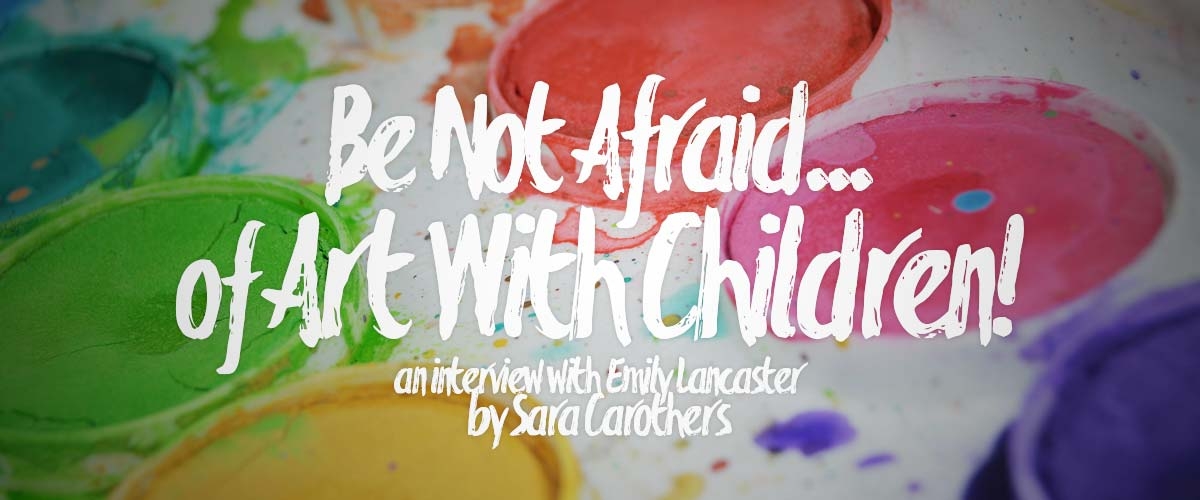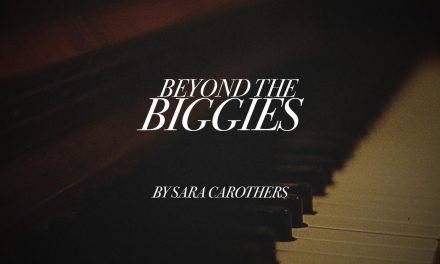Including Art in your homeschool can seem simultaneously exciting and daunting. Supplies and projects can overwhelm. Where do you start? What if art is not your “thing”?
This week, consultant Sara Carothers interviews one of Rainbow’s on-staff artists, Emily Lancaster, to get her input on encouraging your student in art.
Sara: Emily, as Rainbow’s graphic designer, I know you have lots of thoughts about art products and teaching art as well.
Emily: I can certainly tell you which supplies are my favorite picks to use! But you don’t have to know the difference between watercolors and gouache or even have an artistic background to teach art. For me, art is about the process — the journey and not the destination.
Sara: Emily, you have a kiddo at home right?
Emily: Yep, Nathan is 6 years old now. If you ask him, he is 6 and half. He’s been creating art for a while at home.
Sara: Did you do anything in particular to instill that love in him?
Emily: Well, we introduced art at about age 3. We began by trying out different types of art supplies. There’s the traditional like crayons, markers and colored pencils. But then you can also experiment with watercolors, chalk, pastels, acrylic paints, etc. I like to expose kids to a variety of colors and textures: to see how different materials react on different kinds of paper. But no matter the age your child starts, I feel there are 2 main goals: expose your children to a variety of art styles and media, and allow them to explore and experiment.
Sara: Give us some examples of how you did that.
Emily: We would look at a broad range of master artists. At first, don’t try to replicate the work; just show the variety and talk about what you see. Personally, I like using abstract styles with younger kids. For example, we might look at cubism art and then tear up construction paper and use glue sticks to glue the pieces together to create art.
Sara: Moms have all kinds of different talents. It can be intimidating to try and teach your children something you are not comfortable with. Do you recommend just freestyle art with kids or using kits and programs and such?
Emily: First, I must emphasize that there’s not a right or wrong. Art is not like math with specific steps and specific answers. There’s a lot of gray area. The goal is not the finished product; it’s expressing yourself and the world around you with your hands. That can certainly be done on your own or with art kits. Don’t let an “I’m-not-talented” feeling keep you from having your kids try.
But I know that some direction is often helpful. There are some options that provide help but still allow for individuality. One great place to start is a set of free video lessons from Sharon Jeffus called Art Through the Year. Your student will examine famous art, learn art elements; and create their own art following the video step-by-step. Each project includes a supplemental PDF file with directions and supply list. There are currently 10 video lessons, in fact Lesson 10 on Perspective Drawing just came out, with more lessons on the way. Some curricula that follow similar approaches as I do are Artistic Pursuits and Meet the Masters. Both of these teach multiple ages, highlight a master artist, are relatively inexpensive and teach different techniques.
Sara: But what if you know that you have a little artiste? What would you tell that Mom?
Emily: I would encourage them to provide a creative space and some uninterrupted time where your child can experiment with different materials.
Sara: IN THE HOUSE? Isn’t that a huge mess?
Emily: Now that my son is familiar with the process, he knows to be careful. And to help, we have a designated area for creating art with supplies like an easel, smock, brushes, paints, etc. But don’t worry about being neat during creation time. Save that for clean-up.
Sara: Do you use a portion of a room? A bookshelf?
Emily: Most parents won’t be able to designate a separate art room, but they could use a shelf to keep their art stash. The idea is to allow children to be ready to create whenever. A designated area isn’t necessary; you could even go mobile with a small tackle box to carry supplies.
Sara: Those are some very practical ideas. Do you have any last advice for our homeschool artists?
Emily: Art is a subject for all ages. I think it’s important for Mom or Dad to sit down with their children and create together. It’s beneficial for children to see you explore art as well. Just get lost in the moment!
Sara: That is brilliant! Thank you for talking with me today, Emily. You have eased many fears and given us a great place to start.
Emily: Remember, art is fun!





